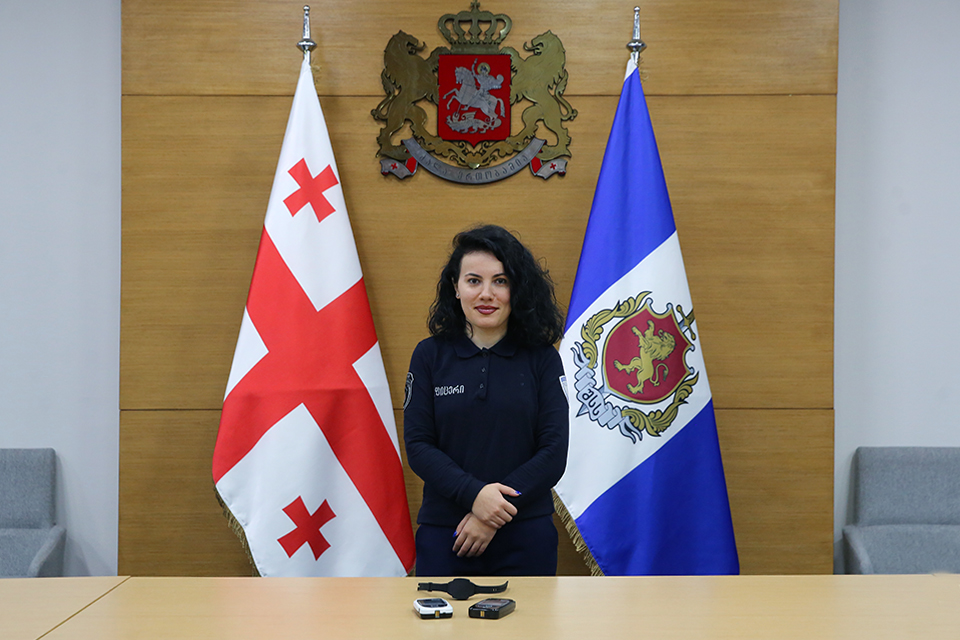In the words of Ana Jibladze: “when there is an actual risk of repeated violence, electronic bracelets are an effective means of protecting victims.”
Date:

A lawyer by profession, Ana Jibladze, 26, is an N7 division community officer at the Isani-Samgori Main Division of Tbilisi Police Department. One of her most significant responsibilities and her main professional obligation is to react promptly to acts of domestic violence and violence against women. After evaluating the risks in such cases, Ana applies a number of tools to protect the interests of victims; among them is the electronic bracelet monitoring system, which has made the fight against domestic violence and violence against women more effective and has saved many lives around the world. An electronic bracelet monitoring system has been in use since 2020 in Georgia, on the initiative of UN Women, under the support of the European Union and in cooperation with the Georgian Ministry of Internal Affairs.
![]()
I have been drawn to protecting human rights and to police work since my time as a student. A community officer is a community-oriented police officer, and that was why I became interested the minute I saw the job vacancy opening.
My main objective was to provide assistance to people, especially women and children, whose rights had been violated. Even now, this is my main motivation: I want to contribute to the restoration of justice and fight against violence with whatever I can.
Every new day at work is different and brings new experiences, but the most important aspect of it all is reacting to acts of domestic violence and violence against women. Every time this happens, I try to focus on the victim and use all the means at hand to protect the interests of the victim.
The first step is to evaluate the risks. The next step, if needed, is to issue a restraining order which restricts the perpetrator from approaching or entering into any kind of communication with the victim. When there is an actual risk of repeated violence, electronic bracelets are an effective means of protecting victims: the perpetrator receives a special electronic device, an electronic bracelet, and if they attempt to approach the victim, the GPS system will transfer an alert signal to the 112 Public Safety Command Center. As a result, immediate measures will be taken.
I have used this mechanism twice myself. In both cases, I was working with an extremely distressed and scared victim, when the risk for repeated violence was particularly high. In one of these cases, a person who had been detained for violence against his spouse, called his wife from the place of his detention just before his release and applied psychological violence against her. The women turned to us for assistance in the matter. Having evaluated all the risks, it became apparent that electronic monitoring was an absolute necessity. With consent from the victim, we fitted the braclet onto the perpetrator just before his release from detention, which was an extremely significant step in protecting the security of the victim. In general, when there is an actual risk of repeated violence, electronic bracelets are an effective means of protecting victims.
Unfortunately, we have cases where the victims themselves refuse to use the mechanism. One of the reasons for refusal could be the lack of public awareness. Consequently, it is very important to use every communication channel to increase the awareness of the general public, so that those in question know how to act if they are victims of violence and are also fully aware of the tools available that protect the security of victims.”